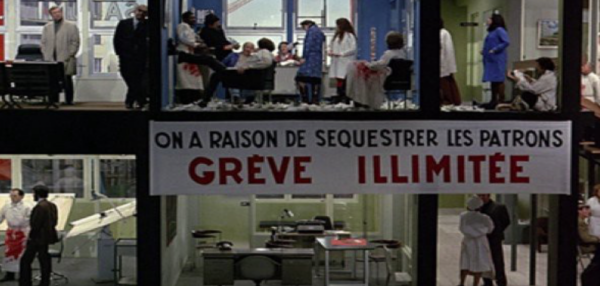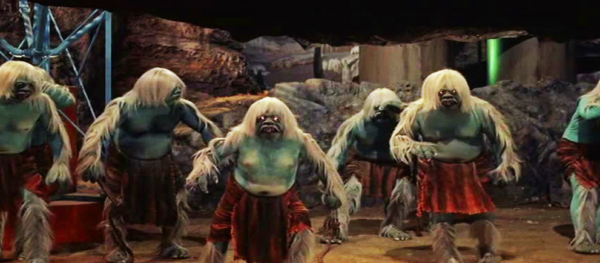The below is one of several selections from two longer works written over the past three years. Our proposition, though, is too little or too obvious. Our thesis was/ is that literature can reveal the self to itself, that, like Proust’s railcar, literature is a time machine; it’s some kinda warp hole. And the strangeness of literature is the strangeness of things. When arts organizations or graduate programs or writers themselves insist on the naturalness of expression, they show their shame and worry. Fascists hate surrealism and other degenerate modes because those modes tell the truth. But, now, that’s all obvious. The state of emergency is self-evident.
The z-axial is a literary mode and a way of reading. It often springs from uncanny, fantastic, speculative texts. For example, time-travel stories suggest the z-axial; they are a kind of liftoff. However, as with Todorov’s fantastic line, the uncanny crashes into “literature,” and all writing becomes potentially z-axial: getting lost, being buried, unveiled, or returning “unchanged” after millennia. The z-axial is a far-out wah-wah-wah: a sine wave, the depth that predicates length and height, a space for potential resistance to white bourgeois presumption embodied by a literary middle-sized naturalness. Daily life. Predictable grids. What we’re describing, though, shows how the everyday teeters on the impossible but truly mortally real, a cosmic and biological forever. This mode is, then, an outflow that opens into the self and is the self as it relates to the “world.” In other words, authorities enclose horizontally and vertically. They naturalize and immiserate, but the z-axial refers us diagonally back to ourselves reborn in the uncontainable world of the present. The z-axial is a trait in literature that reveals the necessity of freedom and revolution. But we’re not describing futurism. Or the speculative, per se. Or, again, the uncanny. We’re describing the now: terrifying space flies away in every direction. We are made of a forever that is everywhere.
The z-axial is a trans-generic and trans-historical feature of literature. Unlike the horizontal, in a high rise, you can imagine floors stacked on top of floors, one narrative on top of another. Like a hinged and opened dollhouse or Jane Fonda pacing from room to room in Tout Va Bien, the z-axial shows the interconnectedness and the interleaves, the piled variety in which everything is always happening all at once. Flattened texts frame their flatness as “real,” but all texts also always, because of readers’ positions “above” and outside of the text, contain the possibility for love and frame breaking: disjunctive time, the supermassive, the infinitesimal, and gossip.

Tout va Bien (1972) Directed by Jean Luc-Godard and Jean-Pierre Gorin
The z-axial pleasures of time travel—an escape hatch, the delicious horror of moving outside of a concrete world/the vibrating and shimmering hand hanging over the Theremin-narrative of dolls’ lives—are linked to memory. Years are a kind of soft fold through which a pin can move.
It’s hard to keep things straight. It’s an inversion of our everyday experience. The z-axial turns time geographic, which makes a double exposure: already so and also later. In Wells’s The Time Machine,
“The Time Traveller put his hand to his head. He spoke like one who was trying to keep hold of an idea that eluded him.”
It can be difficult to remember the multiplying places, their impossible-to-escape presence and their perpetual disappearance.

Elsewhere, in the underworld, time moves much more slowly or much more quickly than our own. You descend into the underworld when you die; ten thousand years may pass, but maybe for you it’s only been a day.
After all, time is meaningless in eternity, so time and Hades are linked in opposition. Though, Persephone’s disappearances are chronometric. Endlessly on hold. The uncanniness of waiting rooms.
Everything is suspended; everything is longing. It’s the feeling of displacement, a hovering virtuality. It’s anywhere, though especially on tombstones, that writing is visible: outwardly emanating forever.
Memory is a crumpled paper with its folds and collisions. It moves faster on foot, making misplacement possible. That’s why smell is the most z-axial sense. Yet, in life the z-axial doesn’t exist and is everywhere. When it passes into the literary, it has to be translated. What is the space between words?
In midsummer you can see them climbing their silk threads. They swing in their bags, like little wooden shawls, outside of banks and in Walgreens’ parking lots. Inside everywhere, money is being exchanged. Everything is always happening at once.
It’s you. It’s that problem; there’s a you and it’s a body. Your body is written on the air, and it’s mobile: uoy can become so familiar that the original shape is lost, like a choral round. Or imagine a rudimentary sketch, a wire box. Then, put another wire box inside of it, almost as if the second is growing out of the first.
Traveling to hell follows a diagonal. Time travel is diagonal. Imagine the hefting of an elephant’s foot or a crocodile sliding down a riverbank, a bishop gliding from one corner to another.
It’s the literature of that very thing, the information-unraveling-revealing-evolving trajectory, the path up out in within over. Constant conflation. Pinned through. Pretend pattern made actual. The thing in the mall where you stare at the image and then look away to re-create it, in something more of the red-brown-green-orange-mirage-variety than what you’d just glanced at, in the air next to the kiosk, laid over the windows of the store that sells animal skin as jackets and purses. A sick feeling. All at once.
History is catastrophe and history is a record as an un-contracted no-place. Oedipus has his z-axial body. His feet make him mobile in all the typical ways and in some less typical ways. His feet move like ours at a relative pace, but his time is also like the parts of a bug. His feet speak a very quiet language, heavenly words that have been clipped in reentry. And the sun comes up, momentarily stalls, and then descends. His feet divide and multiply.
The chorus in Hugh Lloyd-Jones’s translation of Oedipus Tyrannus chants:
“Time the all-seeing has found you out against your will; long since has it condemned the monstrous marriage that produced offspring for you and offspring for itself.”
But, what are the children that time produces “for itself”?

Lloyd-Jones offers a footnote: “see Sophoclea 107f.” There you will find this: “One may understand those children to be evil things, disasters.” So, time gives birth, ceaselessly, we assume, to evil and through its contractions to the present, our “bug time.” Joyelle McSweeney asks:
“What model of literary time is provided by this mutating field time, this bug time, this spasming, chemically induced, methed up mutating, death time, this model of proliferant, buggered, buggy, moist, mutating, selecting, chitinous, gooey, bloated, dying time?”
Network time. Browser time. Is there a “distance” between the tabs? You wake up with a helmet on, tubing, electrodes, etc. remembering everything, all of a sudden, a completely different life: it was all made up. Imagine opening a zipper infinitely thin and long. It’s flight at maximum speed.
Speed up or slow down, or grow very small. Hover. Burrow. Grow massively large. Hide, like Swamp Thing or a bug, reveling and frenzied, beyond the reach of your enemies.
Diagonal thinking, thinking into “depth,” allows us to see corporeal moments as literature?
Wait till the poem turns around and they learn that it has its own face.
Olivia Cronk is the author of Womonster (Tarpaulin Sky, July 2020), Louise and Louise and Louise (The Lettered Streets Press, 2016), and Skin Horse (Action Books, 2012). With Philip Sorenson, she edits The Journal Petra.
Philip Sorenson is the author of Of Embodies (Rescue Press, 2012) and Solar Trauma (Rescue Press, 2018). A shorter handmade work, New Recordings, was released by Another New Calligraphy in 2018, but it’s now out of print. He co-edits The Journal Petra with Olivia Cronk.